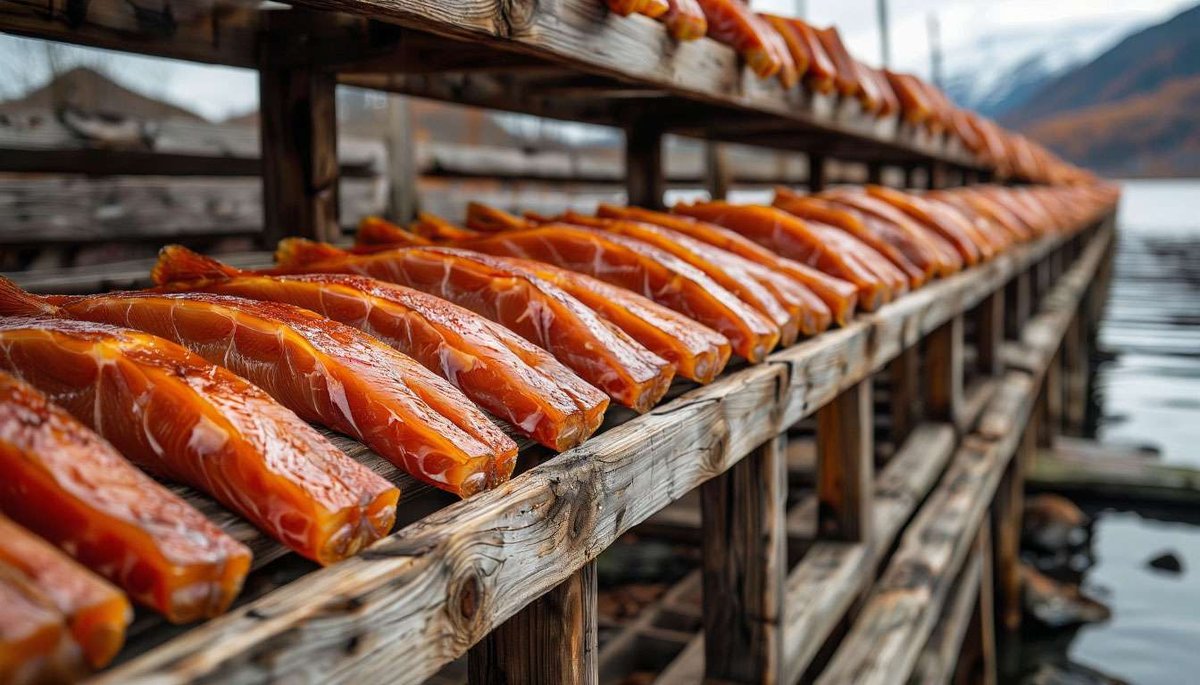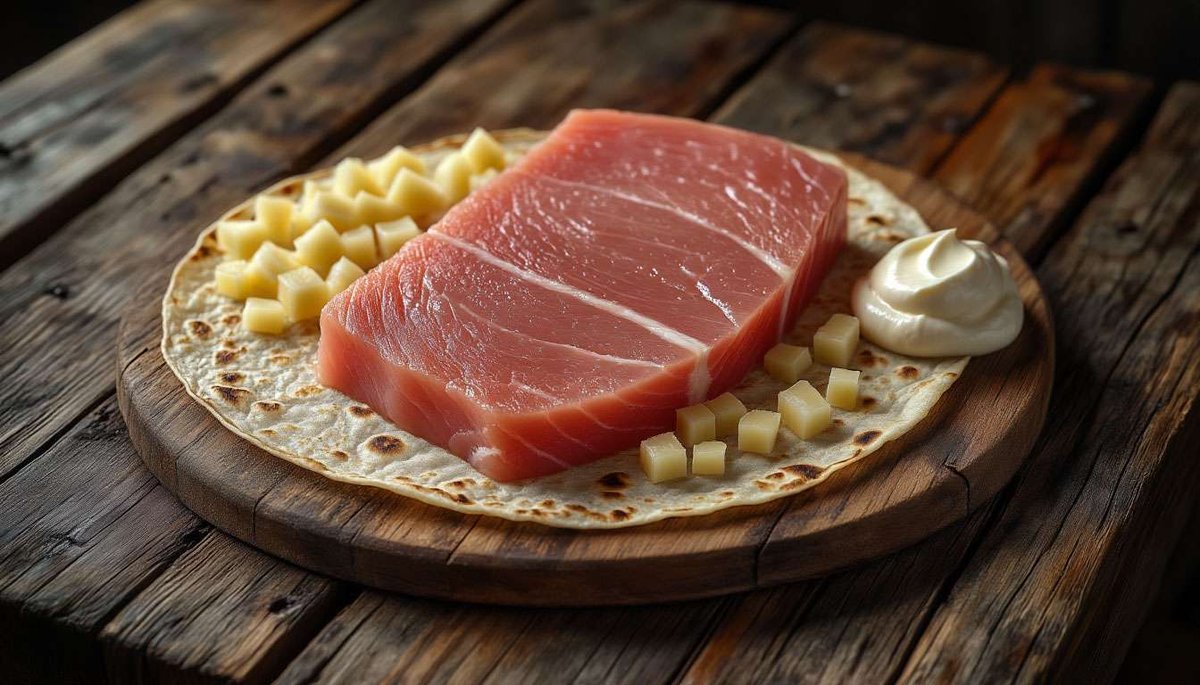The power of wind and alkali: how Norwegians have preserved fish for centuries — from stockfish to rakfisk

Cold, wind and a lack of salt forced Norwegians to find unique ways to 'preserve' the sea. For a thousand years, fish was dried on racks, later fermented in barrels and soaked in lye. Today, these methods seem exotic, but without them there would be no Norwegian trade dominance or winter holidays. Let's dive into the world of aromas of wind, pine needles and light "chemistry" that turned ordinary cod into a gastronomic legend.
Why is fish dried in the open air in Norway rather than salted, as in Southern Europe?
Until the 19th century, salt was an expensive import, but the cold, dry and windy climate of the North Atlantic was free. The cod was gutted, strung on wooden frames called hesje and left in the polar wind for 8–12 weeks. The moisture evaporated slowly, the protein remained intact, and the product could be stored for years without a single grain of salt. This method was only possible in places where the temperature remained between –2 and +5 °C: the fish did not freeze or spoil. Air drying is therefore a truly northern invention.
How does dried stockfish differ from salted and dried klippfisk, and why was the second option invented?
Stockfish is pure dried cod; klippfisk appeared later, when salt became cheaper. The fish is first sprinkled thickly with salt, then dried on rocks (klippe) or nets. Salt accelerates dehydration, adds a characteristic flavour and protects against insects, so klippfisk can be made even in warmer weather on the south coast. Before cooking, it is soaked for 24–48 hours to remove excess salt. Thanks to its compactness and resistance to heat, klippfisk became a commodity for long sea voyages and conquered the Mediterranean under the name bacalao.
What is rakfisk and why does fermented trout smell so strong?
Rakfisk is trout salted with 5–8% salt and tightly packed into barrels under pressure. Without access to air, lactic acid bacteria break down the proteins, giving the fish a pungent, almost cheesy aroma. Maturation lasts from two to ten months at +3°C. The smell is strong, but the taste is complex: the saltiness gives way to a mild sourness, and the fat has a creamy texture. Rakfisk is traditionally eaten cold on lefse flatbread with onions and sour cream, which balances the intense notes of ammonia and umami.

How is lutefisk made and is it safe to eat fish soaked in a lye solution?
Lutefisk is made from dried cod: it is soaked in water for 6 days, then for 2 days in a solution of slaked lime and soda. The alkali breaks down the collagen and turns the tough fillet into a jelly-like mass. After the lye, the fish is soaked again for 3 days until the pH returns to a safe level of 6–7. Heat treatment — baking or boiling — destroys any microbes, and any residual lye is neutralised by potatoes and cream sauce. Therefore, when prepared according to the recipe, lutefisk is completely safe, although it remains a gastronomic challenge for beginners.

Where can tourists try authentic dried and fermented fish?
For stockfish, head to Henningsvær in winter: the Fiskekrogen restaurant serves fillets simply fried in butter. Klippfisk can be found in Kristiansund, where bacalao is stewed with tomatoes and olives. Røkfisk is best tasted at the festival in Fagernes (first weekend in November): dozens of producers, tastings and a competition for the "most aromatic røkfisk". Lutefisk is served from November to January at Lorry (Oslo) and To Kokker (Bergen); book a table — demand is huge during Advent.
How are modern chefs rethinking ancient preservation methods?
New Nordic cuisine uses the same principles, adding scientific control. Chefs dry "baby cod" at low humidity in special chambers, producing translucent crisps to accompany beer. Rackfisk is served as a tartare with molecular horseradish to reduce the smell, and lutefisk is turned into mini croquettes with a seaweed sauce. The key idea is preserved: a long-lasting transformation of flavour without artificial additives. In this way, tradition finds a new audience and proves that old methods are still relevant in the era of gastronomic sustainability.
Drying in the wind, fermentation in barrels and even alkaline baths are not exotic practices, but ingenious responses by Norwegians to the harsh climate. These techniques have given the world products with a unique taste and cultural depth, and the northerners themselves a reliable food "insurance" in winter. When you try a slice of transparent stockfish or creamy rakfisk, you can literally taste the Lofoten wind and the moisture of the fjords. Let the ancient methods tell their own story of survival, ingenuity and love for the sea, and you will understand why Norway is proud of its "wind preserves".





2 comments
Log in to leave a comment